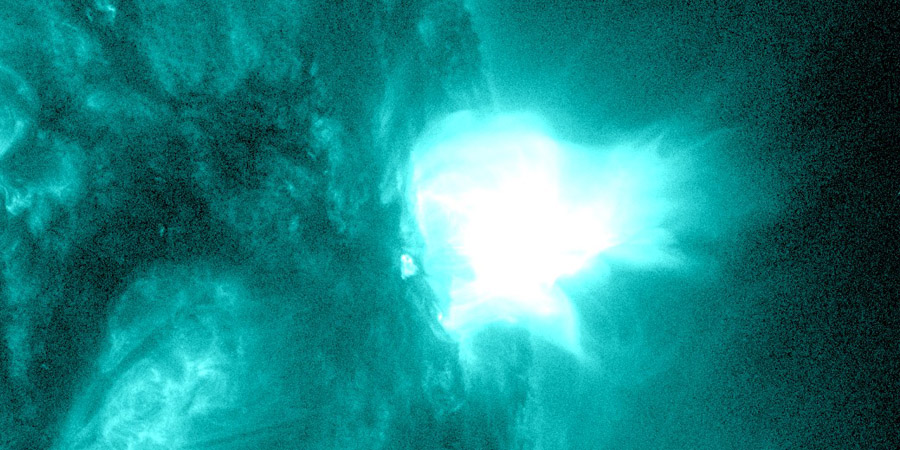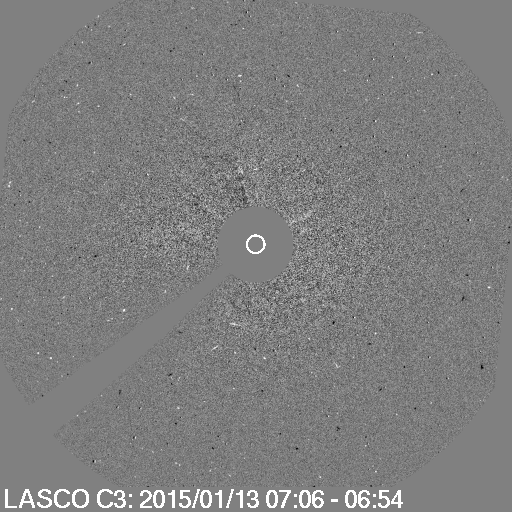M5.6 and M4.9 solar flares
Tuesday, 13 January 2015 15:13 UTC

Solar activity increased to high levels thanks to sunspot region 2257 near the west limb. She said goodbye to the earth-facing solar disk with an M5.6 (R2-moderate peaking at 04:24 UTC) solar flare that had a secondary peak at the M4.9 level around 04:58 UTC.
Updated coronagraph imagery from SOHO shows that there was no coronal mass ejection associated with these events.

Sunspot region 2257 is the only sunspot region on the earth-facing solar disk right now with some magnetic complexity but it is no longer a threat for earth-directed eruptions. All the other sunspot regions on the earth-facing solar disk are not magneticly complex and unlikely to produce a strong solar flare.
Image: NASA SDO.
Thank you for reading this article! Did you have any trouble with the technical terms used in this article? Our help section is the place to be where you can find in-depth articles, a FAQ and a list with common abbreviations. Still puzzled? Just post on our forum where we will help you the best we can!
Latest news
Latest forum messages
Support SpaceWeatherLive.com!
A lot of people come to SpaceWeatherLive to follow the Sun's activity or if there is aurora to be seen, but with more traffic comes higher server costs. Consider a donation if you enjoy SpaceWeatherLive so we can keep the website online!

Space weather facts
| Last X-flare | 2025/03/28 | X1.1 |
| Last M-flare | 2025/04/30 | M2.03 |
| Last geomagnetic storm | 2025/04/21 | Kp5+ (G1) |
| Spotless days | |
|---|---|
| Last spotless day | 2022/06/08 |
| Monthly mean Sunspot Number | |
|---|---|
| March 2025 | 134.2 -20.4 |
| Last 30 days | 122.1 -7.6 |


